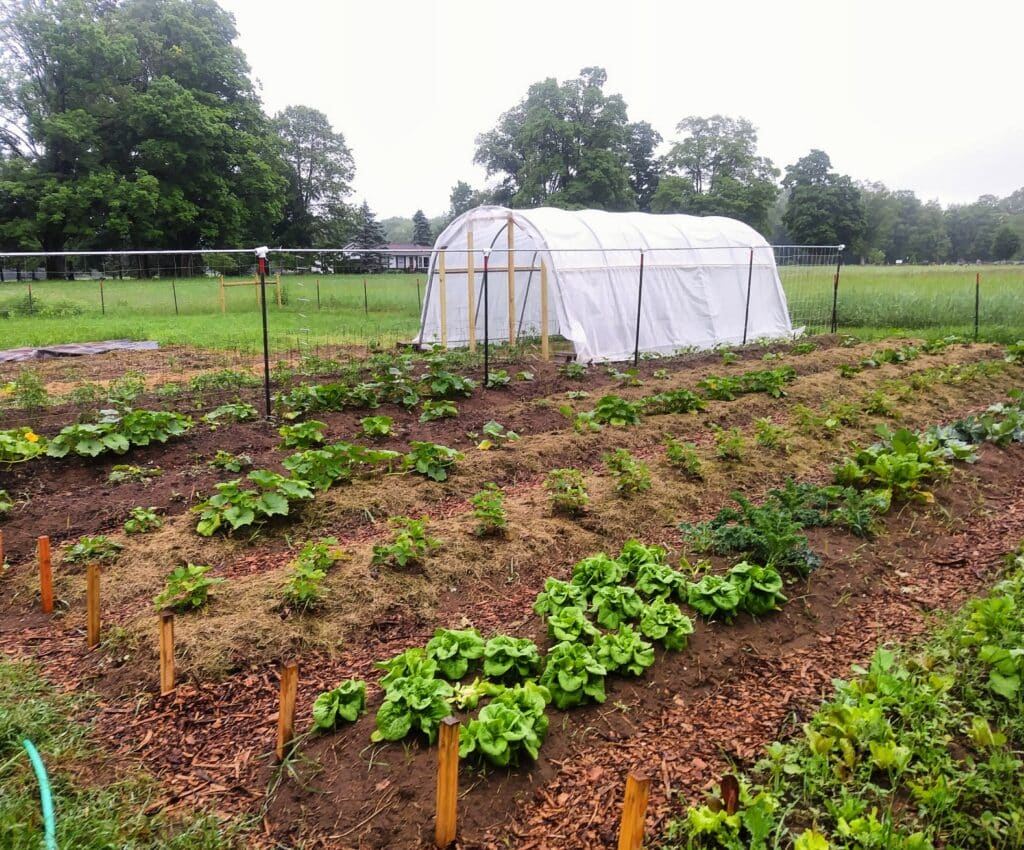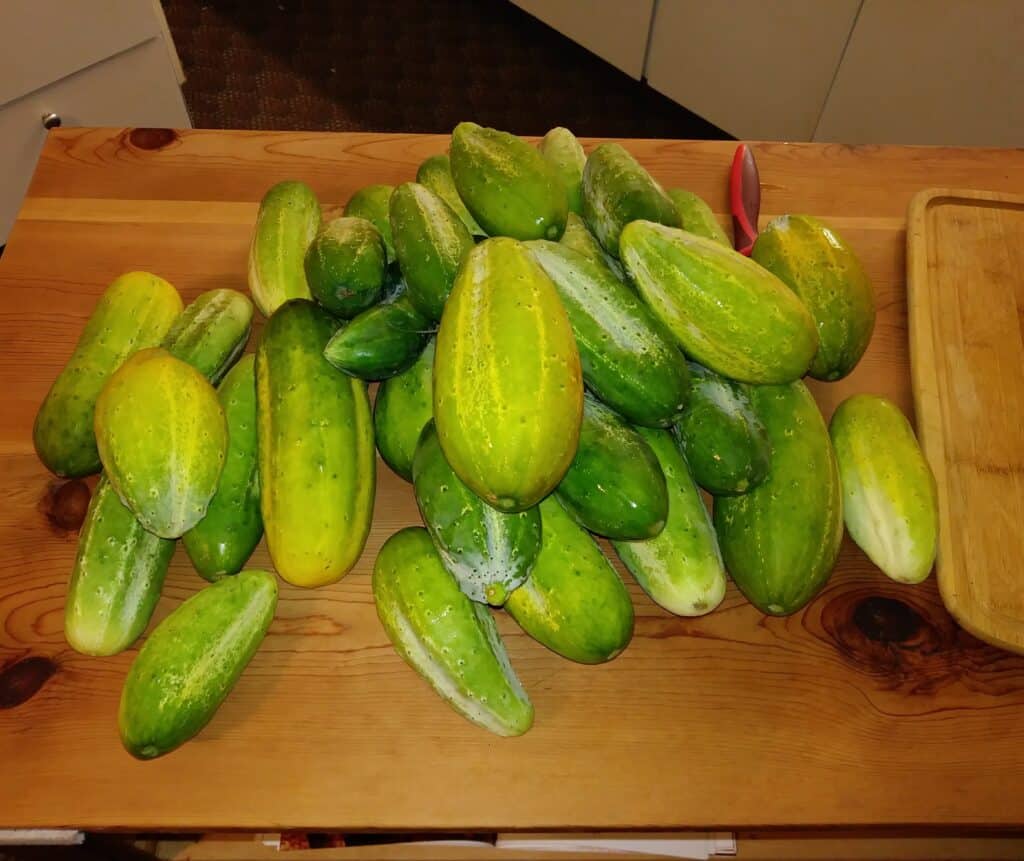Washing both organic and non-organic produce helps remove residual pesticides, but like with brushing your teeth, the timing matters. Here, we evaluate the best ways to wash produce, as well as debunk products that don’t help.
Table of Contents

The Takeaway
- Washing fruits and vegetables before you eat them is always a good practice and reduces pesticide levels. You don’t need to invest in an expensive produce wash to get the job done—salt, vinegar, baking soda, and even plain tap water are all effective for removing residual pesticides.
- Just remember—always wash your produce for longer than you think you need to. Allowing ample time to soak is one of the most important factors for whether your fresh fruits and vegetables come out clean.
- Scrub hardy produce where you eat the skin, including potatoes, carrots, celery, apples, and pears. Always clean the scrubber afterward.
Ideally, everything we’d eat would be grown organically and free of potentially toxic pesticides. Unfortunately, that’s likely not your reality. Sometimes food costs and accessibility make conventional produce the best or only option.
When that’s the case, what can you do to make things more palatable? Will washing produce remove all traces of pesticides? Here’s a look at the research, as well as the effectiveness of seven popular washing techniques.
Is Washing Off Pesticides Worth the Effort?
“Why wash my produce—a little dirt can’t hurt me!” you might be thinking. While true, it’s not the soil that’s scary on your fruits and veggies. Instead, it’s the lingering traces of herbicides, insecticides, and even soil-borne pathogens that are suspect.
As one of countless examples, glyphosate, the active ingredient in popular weed killer Roundup, is a known carcinogen and endocrine disruptor. In 2018, manufacturer Monsanto settled a $289 million lawsuit against a Californian groundskeeper who developed melanoma after a workplace accident dowsed him in it.
Other agricultural pesticides have been linked to diabetes, neurodegenerative diseases, birth defects, reproductive problems, asthma, and other breathing problems. In fact, the average lifespan for a migrant worker in the United States is under 50 years old.
Your risk is lower if you’re only eating produce, not applying pesticides. Still, finding ways to avoid them entirely should be a priority. Is washing your fruits and vegetables effective? The research is clear—the answer is yes.
The Research on Pesticides in Washed Food
Many studies have looked at the prevalence of pesticides in washed produce.
A 2010 meta-analysis of 33 studies found that blanching, boiling, juicing, peeling, and simply washing fruits and vegetables were all effective methods for lowering pesticide levels. Peeling was the most effective, as it physically removes the plant part where pesticides penetrate.
A review published in 2014 found that, while pesticide levels vary significantly between fruit and vegetable varieties, washing with either fresh or saltwater was effective for reducing levels. And while most processing methods (including canning, blanching, freezing, and fermenting) reduced pesticide levels, drying and dehydrating increased them by concentrating the compounds.
The USDA and the FDA both recommend cleaning all fruits and vegetables (conventional or otherwise) under running water, and scrubbing them with a clean brush when appropriate. Use discernment here—scrubbing will work for your potatoes but not your raspberries.
Even with this fairly straightforward advice, the internet abounds with ideas on how to get your produce clean. Let’s break down each one to see which are worth your time.

What works
Washing with Cold Water? Yes
Cold, clean water remains the easiest, most affordable, and arguably most effective way to wash off pesticides. Research from the Connecticut Agricultural Experiment Station found that washing fruits and vegetables under running water reduced up to three-quarters of tested pesticides.
To be most effective, wash your hands with soap and warm water before starting. Rather than soaking them, keep the produce under running water.
Specifics will vary by produce type:
- Scrub hardy produce where you eat the skin, including potatoes, carrots, celery, apples, and pears. Always clean the scrubber afterward.
- Gently rub soft produce like grapes or peaches under a faucet
- Put fragile fruits like raspberries in a colander and spray them gently while moving the colander around so they get hit from multiple angles.
- Discard the outer leaves of lettuce and cabbage before washing
Salt or Vinegar? Yes
An alternative to pricey produce washes is already in your cupboard. Research from Food Control found that salt and vinegar are effective for removing pesticides from cabbage when soaked for 20 minutes in a 10% solution of either of them.
Salt might take the lead, as it’s more cost-effective and less likely to flavor the produce than vinegar. Vinegar’s acidity may break down the thin skin of porous fruits like berries.
Cut the Peel? Yes, with Caution
Since pesticides are sprayed onto the surface of produce, removing the skin can immediately eliminate a large portion of them. While this isn’t possible for all fruits and vegetables, it’s an excellent strategy for apples, potatoes, carrots, and other hardy crops.
Note: you still need to wash the produce before peeling it. Otherwise, you risk transferring pesticide residues from the peel to the inner flesh.
Ultrasonic Cleaners? Yes
If you prefer going high-tech, ultrasonic cleaners are up to 92% effective for removing pesticide residue (at least in cabbage). This technology came out in the 1950s and was first used for industrial cleaning, but handheld devices now make it possible to treat your vegetables at home.
Ultrasonic cleaners produce sound waves that form tiny bubbles on the food’s surface. When these bubbles pop, they dissolve the organic compounds they cover. Your produce should be contaminant-free and ready to eat within ten minutes.
Baking Soda? Yes
One straightforward cleaning method requires nothing more than a few scoops of baking soda. A 2017 study found that soaking apples in one ounce of baking soda with 100 ounces of water for 12-15 minutes completely removed all pesticides from the skin.
Produce Cleaners Don’t Work
There’s a robust market of commercial produce cleaners that claim to be more effective than plain water for washing produce. However, these claims don’t seem rooted in reality. In fact, research shows that most don’t offer any benefits.
The FDA recommends against using them altogether, as their effectiveness is untested. They might even be counterproductive by leaving traces of detergents on your food.
See also: The best non-toxic home cleaners
Note: Timing Is Important
As we’ve touched on above, there are several strategies that work to remove pesticides from produce. What’s important to remember is that the method you choose is less important than the time you do it for. Most studies on pesticide removal involve washing produce for ten to twenty minutes, which is far longer than most of us plan to prep. This means your pesticide removal technique will likely be far less effective than the experts claim.
So what’s the solution? Aim to purchase organic produce as much as possible. That way, pesticides are less of a concern to begin with, and it’s not as overwhelming to give your conventional items a thorough cleaning when necessary.
Alert! Even Organic Produce Can Have Pesticides
Finally, we’d be remiss not to mention that organic produce isn’t necessarily free from pesticide contamination. Thanks to some loopholes in the requirements, organic farmers are allowed to use certain types of pesticides. Conventional farmers have over 900 different types at their disposal, but organic farmers are limited to a couple dozen synthetic pesticides.
While these compounds are carefully regulated and considered a safer alternative, the reality is you still don’t want to eat them. This means it’s good practice to wash your organic produce before eating it, even if it’s just a quick rinse under tap water.